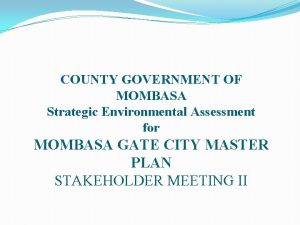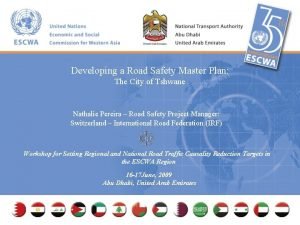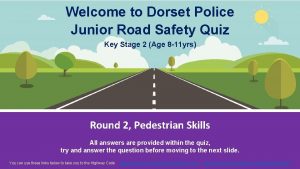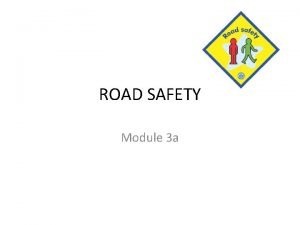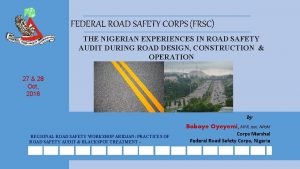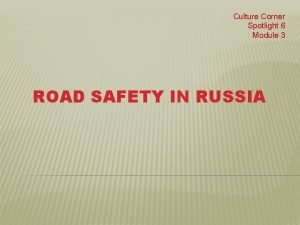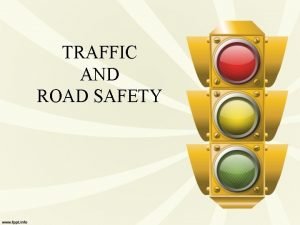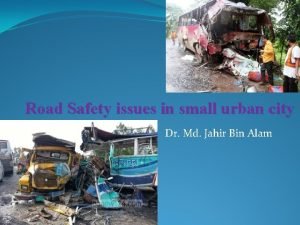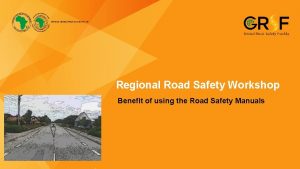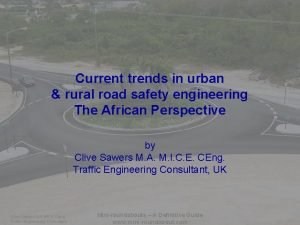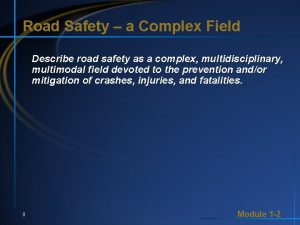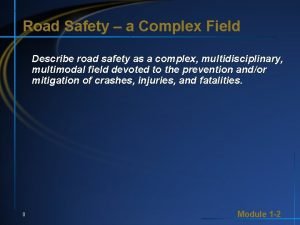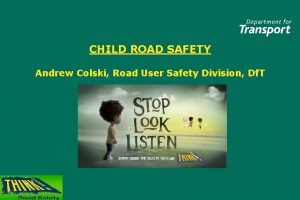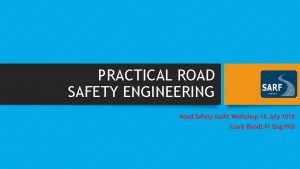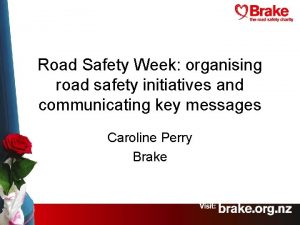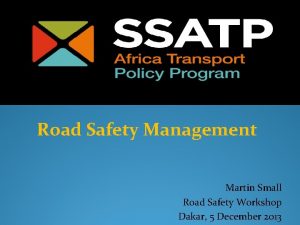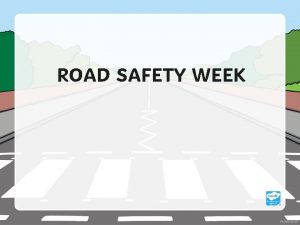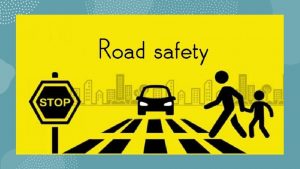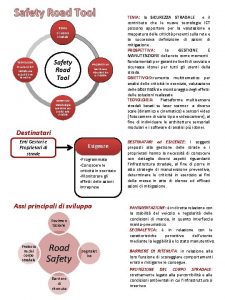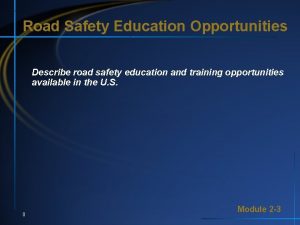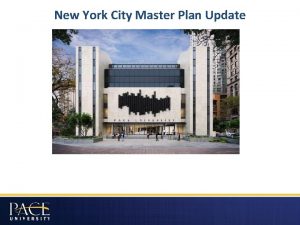Developing a Road Safety Master Plan The City



















- Slides: 19

Developing a Road Safety Master Plan: The City of Tshwane Nathalie Pereira – Road Safety Project Manager: Switzerland – International Road Federation (IRF) Workshop for Setting Regional and National Road Traffic Causality Reduction Targets in the ESCWA Region 16 -17 June, 2009 Abu Dhabi, United Arab Emirates

WHO IS IRF • World forum advocating better and safer roads • Stakeholders are responsible • Five pillars of IRF o Road Safety o Environment o Road Finance o Education o ITS • Statistics

• City of Tshwane - Improving road safety in low-income communities where relevant information is not available Principle of Batho Pele ("putting people first")!

• 2, 27 million residents • Area 3200 km 2 • Length = 65 km • Width = 55 km

Road traffic collisions kill nearly 1. 2 million people worldwide every year, and injure millions more.

CHALLENGES • 401 fatalities in 2002 in the city or 181 per million population 1 fatality per day • 38% of fatalities – pedestrians • High incidence in poorer communities – suffer disproportionately • Communities living along main roads • Limited traffic information • Host City 2010 FIFA World Cup – improve road safety

ADDRESSING CHALLENGES Developed a “Safer City Policy” which included: • The improvement of safety through Crime Prevention, Road Policing and By-law Policing • The development and implementation of Road Safety Master Plans

ROAD SAFETY MASTER PLAN • Set goals and objectives for master plan • Use available accident data and develop systems where not available • Utilize information within communities • Focus on vulnerable groups • Integrate engineering, enforcement, education, awareness and evaluation • Set targets and goals to reduce fatalities

ROAD SAFETY MASTER PLAN • Set goals and objectives for master plan • Use available accident data and develop systems where not available • Utilize information within communities • Focus on vulnerable groups • Integrate engineering, enforcement, education, awareness and evaluation • Set targets and goals to reduce fatalities

ROAD SAFETY MASTER PLAN • Set goals and objectives for master plan • Use available accident data and develop systems where not available • Utilize information within communities • Focus on vulnerable groups • Integrate engineering, enforcement, education, awareness and evaluation • Set targets and goals to reduce fatalities

ROAD SAFETY MASTER PLAN • Set goals and objectives for master plan • Use available accident data and develop systems where not available • Utilize information within communities • Focus on vulnerable groups • Integrate engineering, enforcement, education, awareness and evaluation • Set targets and goals to reduce fatalities

EXAMPLE OF MASTER PLAN

TECHNICAL ASSESMENT EX. FINDINGS: 1. No road signage Marishane Street (P 1252) 2. No speed restriction signs and road markings 3. No sidewalks for pedestrians and scholars 4. Obstruction on sidewalk REMEDIAL MEASURES: 1. Provide required road signage along the street 2. Provide speed restriction signage and road markings 3. Provide sidewalk for pedestrians / scholars 4. Remove obstruction on sidewalk

TYPICAL MEASURES Typical engineering measures include: • Roundabouts and smaller mini circles • Speed humps and raised pedestrian crossings • Public transport facilities (bus and taxi lay-bys) • Walkways • Road signage and markings • Separation of pedestrians and high speed vehicles (pedestrian bridges)

ACHIEVEMENTS

ACHIEVEMENTS

ACHIEVEMENTS • Highly successful process • Sustainable • 21% reduction in fatal accidents • Serious and slight accidents and injuries were also reduced • Reduction in fatalities and serious injuries among youth (age 6 – 20) due to educational campaigns at school and engineering measures at school • Reduction in fatalities in the age group 21 to 25 due to law enforcement campaigns (speeding & drinking) at key venues • Guidelines for the development of road safety master plans have been produced

CONCLUSIONS • Essential to have a clear policy and strategy to reduce fatalities and serious injuries with goals and objectives • Road Safety Master Plans is an effective tool to prepare implementation plan • Information within communities can be very valuable in identifying Hazlocks (black spots) • It must be verified through road safety assessments / audits • Targets must be set and measured on a quarterly basis • It is essential to incorporate enforcement, education and awareness programmes into the master plans

THANK YOU! www. irfnet. org
 Global plan decade of action for road safety
Global plan decade of action for road safety Roadside drug testing nsw
Roadside drug testing nsw Mombasa gate city master plan
Mombasa gate city master plan Safety master plan
Safety master plan Data governance strategy and roadmap
Data governance strategy and roadmap What is paved and unpaved road
What is paved and unpaved road 446 alta road suite 5300 city san diego
446 alta road suite 5300 city san diego Road safety true or false quiz
Road safety true or false quiz Safety at road works
Safety at road works Road safety vocabulary
Road safety vocabulary Opal approved ivms
Opal approved ivms Functions of federal road safety corps
Functions of federal road safety corps Road safety spotlight 6
Road safety spotlight 6 Road safety audit ppt
Road safety audit ppt Floor lieshout
Floor lieshout Why is road safety important
Why is road safety important Road safety
Road safety Slogans on road safety
Slogans on road safety Road safety
Road safety Road safety
Road safety


